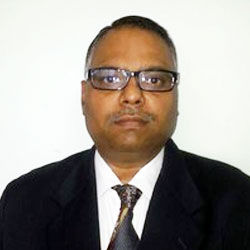


Sanjay Gupta

PVC coated polyester fabric finds application in products like tarpaulins, tents, exhibition hangar covers, sports goods, bouncies and inflatables. Our estimate of market size for this segment is Rs. 120 Crore per annum with 15-20% growth. Architectural fabric for tensile structure is another growing opportunity.
Geotextiles / Geo-synthetics are being increasingly used in India for infrastructure projects. However, their penetration and spread lacks behind countries like China which have similar infrastructure needs as India. The main reasons for their slow spread are: Unwillingness of Government Departments to try out new technologies. The tendering system is structured to receive a minimum number of bids irrespective of the technology used. Therefore, it encourages copying of technology and discourages innovation. Lack of Indian codes on installation procedures with these materials, which leads to failures. Slow speed of decision making which impacts project bottom lines.
The Government can boost usage by allowing new innovations and patents to be specified in projects without the cursory requirements of 3 bidders. This will open up the field for manufacturers/ installers to innovate. Set up a system whereby an innovative product can be tested and approved by a COE before being specified in project. Improve speed of decision making, Encourage Government Departments to try out new technologies as solutions for their project problems. Delegate the powers for usage of innovative products to the field personnel who are responsible for implementation.
The Plateena ropes are made with Dyneema and have the same strength and diameter as a steel wire rope with only 1/7th to 1/5th of the weight. These ropes do not need any oiling or greasing thus saving precious manpower and avoiding down time. Since no oil or grease is to be applied it does not contaminate the sea water thus is environment friendly. It is soft on hand and does not cut it. It does not snap back thus leading to better safety on – board the fishing vessel. The ropes are used as a replacement to SWR for fishing, shipping and power line erection. Though the winches for these applications are different; different versions of Plateena ropes are designed for each application.
An aquaculture cage is a bag wherein fishes are grown in captive condition by feeding various types of fish meal. The fish in wild catch is reducing and is not sufficient for the growing population. Therefore, this type of fish breeding helps providing the protein rich food to the masses. Traditionally Aquaculture cages are made of Polyamide and in the recent past from Dyneema knotless nettings and in some cases knotted nettings. However, Polyamide cages attract lot of fouling and require antifouling coating to be done which is environmentally hazardous. Cages made with Dyneema are very costly. GWRL has recently developed a new Polyolefin Multi-Mono filament called STAR. This enables making of cages without anti fouling coating and at the same time not exorbitantly costly. Due to no anti-fouling coating the fish produced are organic in nature (without traces of copper etc.)
Nets without UV-stabilization will not last more than 12 months. UV-stabilised nets are designed to last for a period of 3-5 years under local conditions. These offer better value for money to the customers due to extended life.
In most segments we operate in, we have been pioneers and always benchmarked our products to the international standards. Majority of our exports is to the developed countries where we compete with European/American producers. Therefore the threat from low technology products is relatively lesser.
For Cordage business our strategy is to explore new geographies in the international market and upgrade products/introduce new products/variants keeping end application in mind. Three new business segments for us are Geo, Agri and Coated fabrics where we see exponential growth in demand.
We plan to expand our product portfolio in Geotextiles, Agritextiles and Coated fabrics segments either through in-house R&D or tie-ups with international players. We are looking for opportunities for joint venture with international players who are interested in Indian market. For our cordage business, our in-house R&D will continue to upgrade our product portfolio.
DISCLAIMER: All views and opinions expressed in this column are solely of the interviewee, and they do not reflect in any way the opinion of technicaltextile.net.